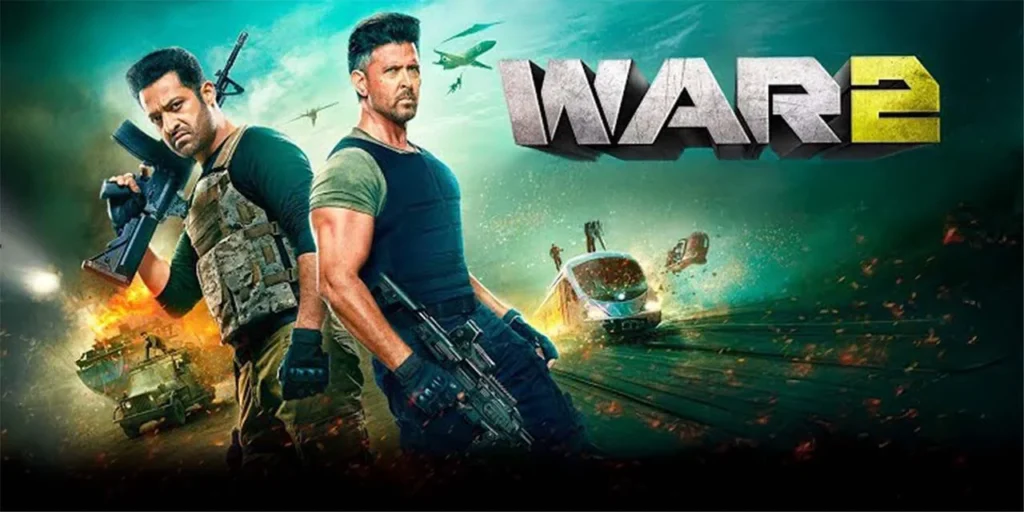In recent years, Bollywood has increasingly leaned into anti-Pakistan propaganda to craft blockbuster narratives that resonate with nationalist sentiments. From high-octane spy thrillers to war dramas, filmmakers have routinely framed Pakistan as the perennial villain, often without nuance or factual accuracy. This trend reached its latest peak with the release of War 2, starring Hrithik Roshan and Jr NTR, which leveraged the controversial Pahalgam attack to fuel its storyline. By analyzing the cinematic strategies and political context behind these films, we can better understand how entertainment is used to shape public perception and diplomatic discourse.
Historical Roots of Anti-Pakistan Propaganda
India’s film industry first embraced overt anti-Pakistan themes during the 1971 Indo-Pak war, but this tactic has intensified since the 2000s. Movies like Mission Kashmir (2000) and Lakshya (2004) depicted Kashmir as a battleground for Pakistani-backed terrorism, painting the neighboring nation as an unambiguous antagonist. These early successes demonstrated the commercial viability of jingoistic storytelling and established a template that Bollywood continues to replicate.
Modern Spy Thrillers and Nationalist Appeal
The War franchise, launched in 2019, epitomizes this approach by casting Pakistani intelligence agents as masterminds behind global terror plots. Fighter (2024) further escalated tensions by dramatizing the Balakot airstrikes and including dialogue that labeled Kashmir “Indian-occupied Pakistan.” This messaging was amplified when War 2 debuted in August 2025, unwittingly aligning its plot with the real-life Pahalgam attack, an incident still mired in uncertainty about Pakistan’s involvement.
The Pahalgam Attack as Propaganda Catalyst
On April 22, 2025, the Pahalgam attack claimed the lives of 26 tourists in Indian-administered Kashmir. Indian officials swiftly blamed Pakistan without publicly presenting conclusive evidence. Bollywood producers capitalized on this ambiguity, weaving a fictionalized account of RAW agents versus Pakistani operatives into War 2’s promotional campaign. By substituting dramatized espionage for verifiable facts, the film reinforced stereotypes while sidestepping journalistic rigor.
Impact on Public Perception and Regional Relations
When blockbuster cinema consistently depicts Pakistan as a nefarious aggressor, it entrenches public bias. Audience surveys reveal that viewers internalize dramatic portrayals as factual representations of international conflict, fostering distrust and hostility. Filmgoers may conflate on-screen dramatizations with real diplomatic positions, making nuanced discussions of cross-border cooperation more difficult. Cultural exchange between India and Pakistan suffers when popular media serves as a propagandistic tool. Pakistani films are frequently banned in India following controversial releases, while cease-fire agreements and peace talks are overshadowed by the latest cinematic outrage. This cycle of retaliatory censorship perpetuates a narrative of perpetual enmity, undermining grassroots efforts to build goodwill.
The Role of Hrithik Roshan and Star Power
Hrithik Roshan has emerged as Bollywood’s leading figure in anti-Pakistan cinema, matching and even exceeding the record previously held by Sunny Deol. With five major films featuring jingoistic themes, Roshan’s star power ensures widespread dissemination of anti-Pakistan propaganda. His involvement lends credibility to the narrative, persuading audiences that these portrayals reflect real security concerns rather than sensationalized fiction.
Toward Responsible Storytelling
Film critics and media scholars have called for greater accountability in Bollywood’s depiction of geopolitics. They argue that blockbusters should differentiate between entertainment and reality, include disclaimers when fictionalizing current events, and refrain from exploiting unresolved tragedies for commercial gain. A healthier cinematic landscape would incorporate diverse perspectives, humanizing characters on both sides of the border. Stories of individual courage, humanitarian cooperation, and shared cultural heritage could counterbalance jingoistic fare and foster mutual understanding.
Conclusion
Bollywood’s trend of anti-Pakistan propaganda reflects a broader intersection of entertainment, politics, and public sentiment. While these films generate box office success and patriotic fervor, they risk distorting reality, fueling stereotypes, and hindering regional peace efforts. As audiences become more discerning, the industry faces a choice: continue capitalizing on fear-driven narratives or embrace responsible storytelling that respects the complexities of South Asian geopolitics. By prioritizing accuracy and empathy, Bollywood can transform from a propaganda machine into a bridge for cross-border understanding.


